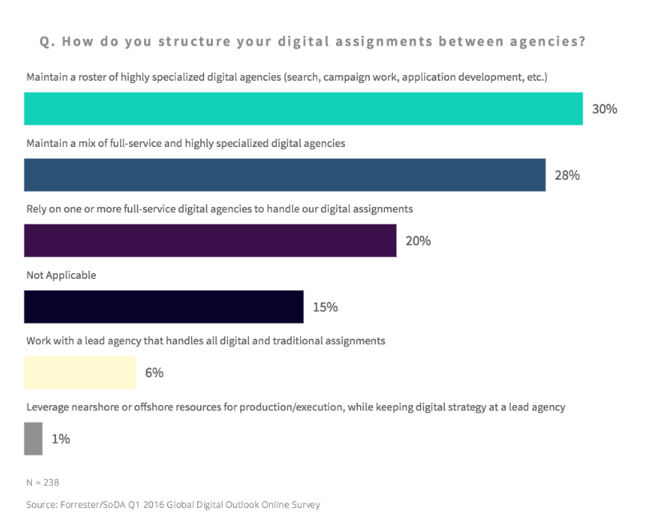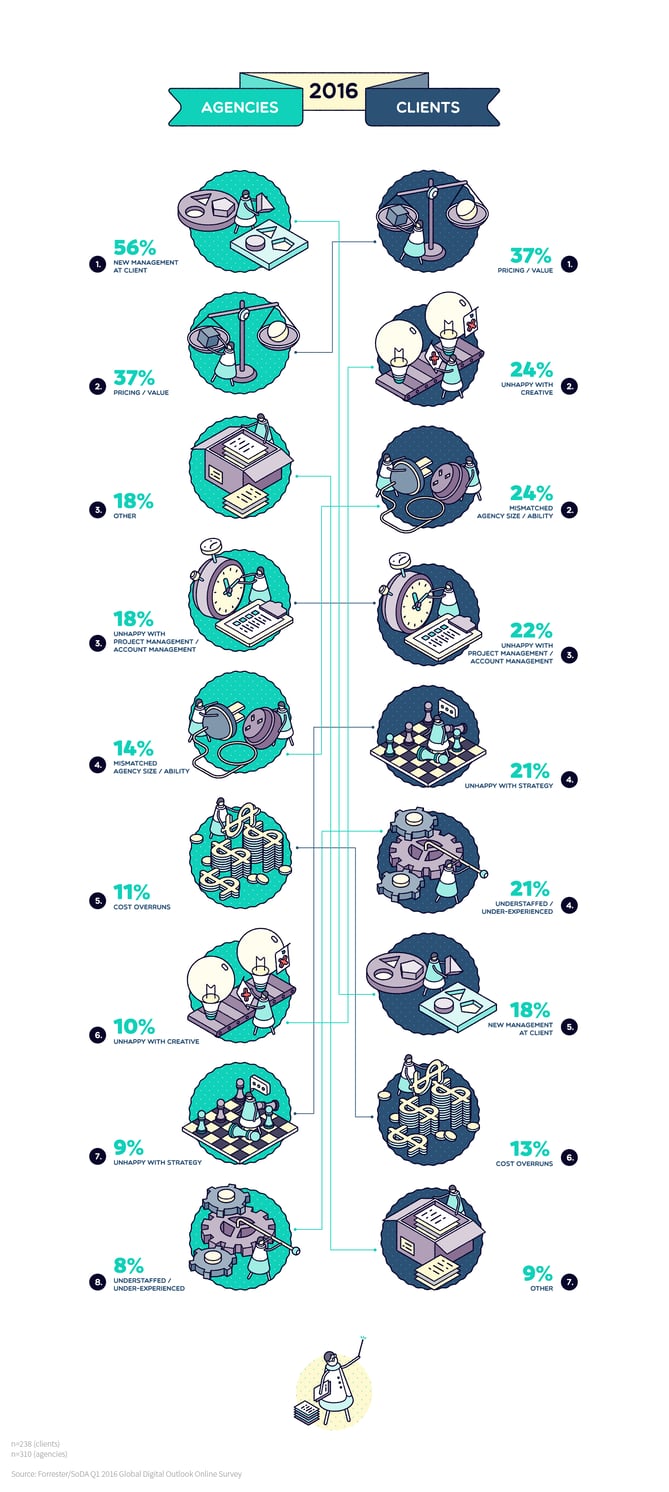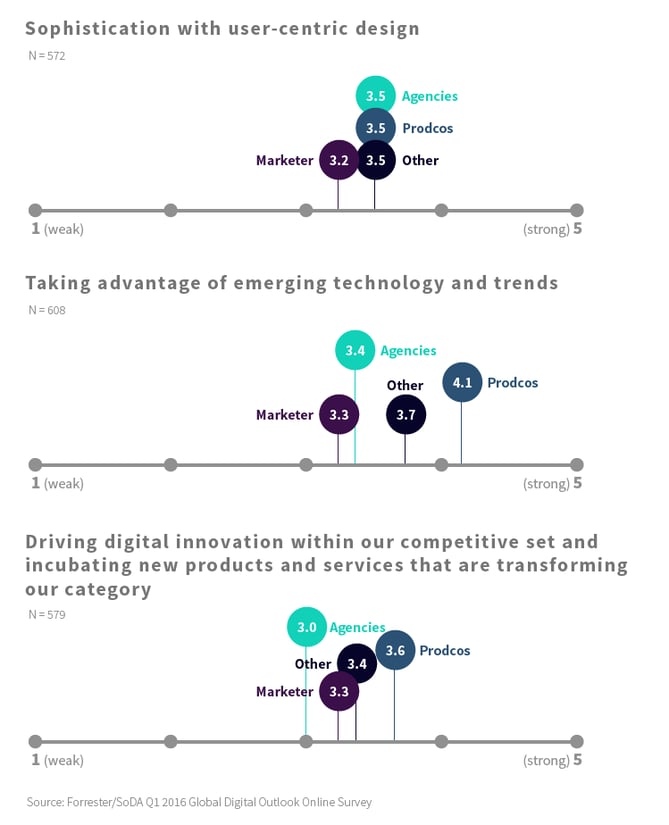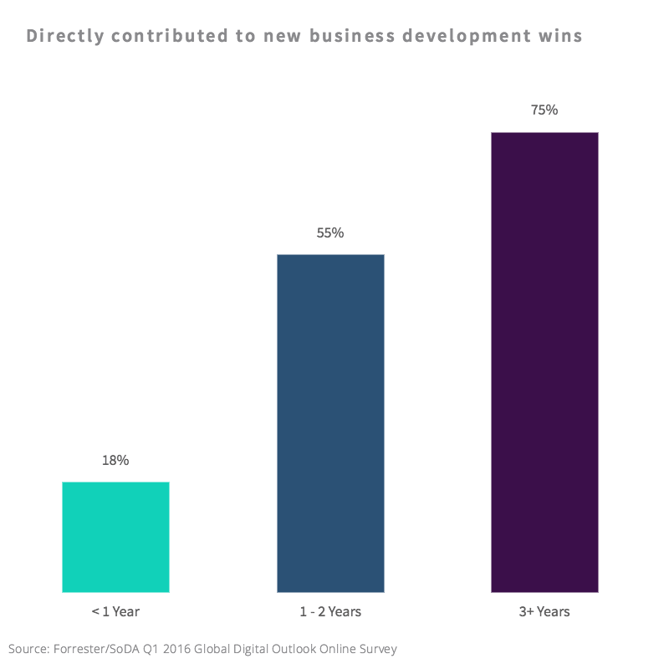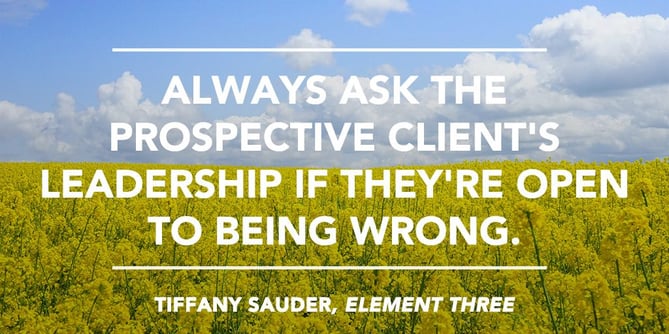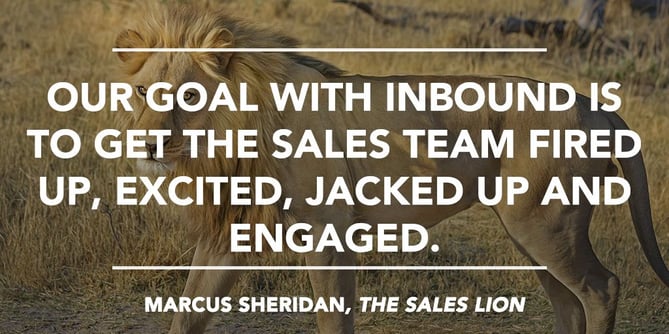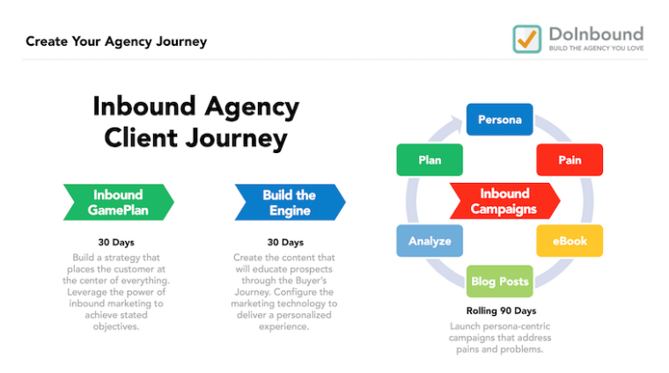A great business pitch is among the first of many hurdles an entrepreneur must jump to get their company off the ground.
While it's not necessarily an indicator of future success, it's a critical moment for any business. A great pitch can bring valuable partnerships to the table -- partnerships that come with even more valuable financial incentives.
Business pitches take place in a wide variety of settings, from elevators, to offices, to cocktail parties. Some lucky entrepreneurs get the chance to pitch their businesses on ABC's hit TV series Shark Tank, where promising entrepreneurs pitch to a panel of five "Sharks" -- self-made multimillionaire and billionaire investors who've achieved enormous success in their respective industries.
These entrepreneurs have a short amount of time to tell their stories, sell their products, answer questions, and overall make an impact that they hope will lead to a major money-making opportunity.
There's a lot about delivering great product pitches that we can learn from the show. Read on to learn about tips from successful Shark Tank product pitches.
(Do you have a startup you want to pitch? Enter HubSpot’s pitch-off competition for a chance to pitch your business on-stage at #INBOUND16 in front of thousands of marketing and sales professionals, early-adopters, techies, and our panel of all-star judges. Click here to learn more about how to enter the pitch-off.)
8 Tips From Successful Shark Tank Product Pitches
1) Prepare, prepare, prepare.
Selling your idea is as much how well you present it as it is the idea itself. Back in 2012, Shark Tank investor Barbara Corcoran told Business Insider that the best pitch she's every seen on the show was from Sabin Lomac and Jim Teslikis, co-founders of a seafood truck company called Cousins Maine Lobsters."I remember thinking to myself, 'My God, these guys are amazing!'" said Corcoran. "They were clear, they were good-looking (you couldn't take your eyes off them), they were high energy, and they answered every question and objection like geniuses. Genuine, rock solid, and perfect answers."

Image Credit: Business Insider
Once she started working with them, Corcoran understood the secret to
their polished appearance on the show: preparation. The two co-founders
had spent a tremendous amount of time and energy preparing for their
appearance on the show. For instance, they watched all four existing
seasons of Shark Tank and wrote down every objection any shark
had ever asked an entrepreneur. Then, they prepared and practiced their
answers and quizzed each other to make sure they had it all down before
appearing in front of the Sharks."I haven't seen it before, and I haven't seen it since," Corcoran said of their avid preparation.
The Takeaway
Before you make your pitch, you'd better do your homework. Study the bios, social media accounts, and investment backgrounds of every single investor who will be in the room. Make sure you understand what drives each of them so that you can adapt your pitch accordingly. Remember: Your presentation shouldn't be the same if you're pitching to a potential partner versus a potential engineer hire, for instance.Know the key points of your presentation cold and nail at least the first few minutes of your presentation where it's just you doing the talking. It's harder to straighten out a bad pitch than it is to keep the momentum of a good one going.
As Shark Tank investor Mark Cuban says, "Do the work. Out-work. Out-think. Out-sell your expectations. There are no shortcuts."
2) Practice your pitch in front of real people first.
We're all heard the mantra "practice makes perfect" time and time again, but I want to really hammer home that how well and often you practice your business pitch can make a potentially life-changing impact on you and your business.Let's take the case of Aaron Krause, the man who created the product Scrub Daddy, a smiley-faced cleaning utensil that received a bid from Shark Tank investor Lori Greiner -- and has been called the most successful product in Shark Tank history.
In addition to having a phenomenal product, Krause's differentiator was practicing his pitch in front of other people before going on the show. According to Krause, he practiced for months in local grocery stores where he was selling his product. In the process, he refined his pitch so well over a period of months that, when he finally appeared on the show, his delivery and demonstration was flawless. Shark Tank investor John Daymond said it was "like watching a live infomercial."
Later, Daymond would say it was his favorite pitch of the first six seasons of the show. Daymond was beat out by Greiner, who invested $200,000 in exchange for 20% equity in Scrub Daddy.
The Takeaway
The more familiar and comfortable you are with your pitch, the more effective your presentation will be. Like Cuban said, there are no shortcuts here: You have to practice (a lot) to reach the level of familiarity and comfort that'll result in a flawless presentation. And that flawless presentation could make you a lot of money.At the end of every practice pitch, ask yourself what you would change about it. In fact, in certain settings, you might ask the people you pitched to what they would change about it. Use it as a learning exercise by reflecting on what went well and what you can do differently next time.
Pro Tip: Silicon Valley venture capitalist Guy Kawasaki suggests that you throw away your pitch and start with a clean slate every five pitches or so. "Let this 'version 2.0' reflect the gestalt of what you’ve learned instead of being a patchwork quilt," he wrote.
3) Tell a great story, and make an emotional connection.
While some presentations are more formal and have rigid structures, pitches tend to have more flexibility -- and presenting your pitch as a story can be much more compelling than a list of facts.One of the best showcases of how a compelling story can win over investors (and can even, in some cases, make up for lack of business acumen) comes from Tree T-PEE founder Johnny Georges. That pitch was the most emotional moment ever on the show, said Shark Tank investor Kevin O'Leary. "It actually is the reason the show won an Emmy," he said. Shark Tank had won an Emmy for Outstanding Structured Reality Program in 2014.
Georges' pitch began with the story of how he developed a business from his late father's invention, a device farmers can use to reduce the amount of water wasted by irrigating orange groves.

Image Credit: Business Insider
The investors liked the technology and the patient, but they told Georges they were disappointed by his lack of drive to make these devices more profitable.
Georges' response? He launched into a powerful story of why he believes so strongly in helping his fellow farmers and carrying on his father's legacy. "It was a particularly powerful moment in Shark Tank," said O'Leary, "and no one's going to forget it. Every Shark had a tear in their eye, including me. He is a great soul, that man."
A guest investor on the show that day, Paul DeJoria, ended up investing $150,000 for 20% equity.
The Takeaway
This story isn't about how to make up for not being business-savvy. But it is a powerful example of how making an emotional connection with the investors and connecting with them on a human level can make a big difference in the outcome of your pitch.Remember: People tend to react emotionally first, and then rationalize logically. Research shows that even decisions we believe are logical ones are arguably always based on emotion.
"People cannot run emotion and logic at the same time," wrote Martin Soorjoo, author of Here’s the Pitch: How to Pitch Your Business to Anyone, Get Funded and Win New Clients. "This means that when you construct and deliver your pitch, focus on ensuring you achieve favorable power dynamics and inspire and engage your audience so that you keep them in the emotion zone."
4) Promote yourself as a savvy business person.
The entrepreneurs on Shark Tank who've given the best pitches not only tell a compelling story, but also promote themselves as smart, savvy businesspeople. After all, an investment results in a business partnership -- and investors want to work with smart people who know what they're doing and can make them money.Brian Lim is one such entrepreneur. In 2015, he pitched his product EmazingLights, which are gloves with LED lights in the fingertips that have become popular at raves and music festivals.
At the same time he pitched his product, he also pitched both the product and his own work ethic and business acumen. He credited the $7 million in annual revenue he'd earned through EmazingLights to his focus, passion, and long-term vision to beat out his competitors in the emerging rave apparel space.
"We own 80% of the global gloving market," said Lim in his pitch. "The rest of the market is made up of four or five of our competitors, and I guarantee they do not operate at the same level."
He used data to back up strong statements like these. For example, he started the company with $100 and has grossed over $13 million in four years while starting another supporting company for the rave community called iHeartRaves.
"In my view, the transient nature of it has me a little nervous, but I can see someone here who's working his tail off, which is interesting," said O'Leary before making the first offer.
The biggest compliment Lim received came from Shark Tank investor Robert Herjavec during negotiations on the episode: "You're the real deal, man," he said. "You are probably one of the, if not the best entrepreneur we've had here."
Lim would end up making a deal with Cuban and Daymond, with Cuban giving $650,000 for 5% and John taking licensing rights and a 20% commission.
The Takeaway
Lim had a great business plan and the numbers and sales history to back it up -- but where he really stood out was in selling himself as a phenomenal entrepreneur and potential business partner.Investors know that the better their business partners, the less work they'll ultimately have to do. Use stories about your work ethic and dedication to convince investors that you have what it takes to come up with new ideas and take on business initiatives intelligently, all by yourself.
(If you want to develop your own entrepreneurial skills, here's a list of resources that'll help you become more business-savvy.)
5) Make your presentation visual and interactive.
If giving a business pitch makes you think of PowerPoint slides and bullet points, then you're doing it wrong. On Shark Tank, a common thread for successful business pitches are that these entrepreneurs make their presentations heavily visual and even interactive. In many cases, they bring products or parts of the product that the Sharks can actually touch, hold in their hands, and experience for themselves.For example, Lani Lazarri, who was 18 years old at the time, gave a thorough demonstration of her line of skincare products called Simple Sugars. Early on in the presentation, she asks one of the investors Laurie Geiner to come up to her table and try the product for herself.
Lani gave Laurie a choice of which flavor to try, and instructed her to add a little bit of water and scrub until she felt the sugars start to melt. She asked Laurie how it felt, to which Laurie responded, "It feels very, very soft."
"That's the oils in it," Lani responded. "The sugar removes the barrier of dead skin cells that naturally sits on top of your skills, which allows the oils to penetrate your skin and provide that moisture." The visual language helped the other investors in the room feel what was happening without actually trying it for themselves.
In general, you'll notice that the vast majority (if not all) of Shark Tank's best pitches are highly visual and involve interactive elements like Lani's. The only time you'll see entrepreneurs use a slide deck is to present the name of the product, and sometimes to show different elements of it that can't be seen in person.
The Takeaway
Visual presentations and physical interaction have positive psychological impacts on an audience. Research shows the longer we touch or hold something, the more we feel ownership over it --- and the more we want it. And the more we feel we already own something, the higher value we place on it.You can still use PowerPoint slides, but if you do, be sure to offer interesting visual and dramatic slide presentations. (And read this blog post for 14 PowerPoint presentation tips to make your designs more effective, along with free templates.)
Pro tip: Prepare a second version of your slide deck to send out later as a leave-behind that you can include in your follow-up to investors. Your two presentations should match in general flow and content, but the one shown in your live presentation should be highly visual, and the one to send later should have more words and explanations so it can act as a standalone presentation.
6) Highlight product validation by talking about early sales.
Some of the most common questions Sharks ask of entrepreneurs on the show are about sales:- What are your sales year-to-date?
- What do you think you'll do this calendar year?
- What do you think you'll make on it?
One entrepreneur named Max Gunawan pitched his foldable lamp company, Lumio, to the investors on Shark Tank in 2015. In his pitch, he clearly illustrated how an investor could make money off his quickly growing company by explaining that he grew the business to $1 million in annual sales within two years.
Rebecca Rescate, who founded a toilet training kit for cats called CitiKitty, also used her sales numbers and projections to prove the value of her concept.
After fielding some jokes from the investors initially, she pushed through to explain how she'd made $225,000 in sales the previous year all by herself -- and earned coverage in major media outlets like The Wall Street Journal to help create a demand. She ended up making a deal with Kevin Harrington for $100,000 for 20% equity.
The Takeaway
Along with a compelling story and presentation, talking comfortably about your sales numbers and projections is a very important part of your pitch. Without numbers to back them up, whether a person likes a product concept or not is fairly anecdotal. Investors like to see ideas that are backed by real dollar figures.If you haven't put your product on the market yet, you can get an idea of demand and promises to buy from your Kickstarter marketing. If nothing else, Angel Investor Tim Berry suggests bringing signed letters from future customers or from sales channels. "Distributors or retail chains are very helpful," he wrote in an article for Entrepreneur. "And when possible, don’t just talk about documents. Take a picture and post it on a slide in the deck."
Remember to be realistic with your sales predictions. If they're not believable, then you won't be, either. (Read this blog post to learn more about how to accurately predict your future sales.)
7) Come in with a negotiation strategy.
The negotiation is arguably the hardest -- not to mention the scariest -- part of a business pitch. One of the most common reasons why entrepreneurs fail to land a deal on Shark Tank is because they don't negotiate well. Either they haven't done their homework on the numbers, or they become indecisive or anxious, or both.Brad Schultz, Aimy Steadman, and Justin Fenchel made up the three-person team behind boxed wine cocktail company Beatbox Beverages.

Image Credit: Heavy
Let me outline how the negotiation went for you ...
When the BeatBox team first entered the meeting room, they asked for $250,000 for 10% equity. During their pitch, they talked about how they initially invested $55,000 in the company themselves, along with an additional $100,000 borrowed from friends and family -- which resulted in $235,000 in sales in their first 14 months.
"Tell me how you're going to take it from $235,000 to $5 million," Herjavec responded. Fenchel said that the money would be used mostly to hire brand ambassadors to set up tastings at liquor stores.
Another investor at the table, Mark Cuban, didn't like it. "Your leverage points for any one store aren't great," he came back. What Cuban meant here was that getting products in even the largest private store doesn't offer potential for massive growth, according to Business Insider's coverage of the episode. A better strategy, Cuban said, would be to bring their products to big events with thousands of people.
After some back-and-forth about promotion and distribution strategies, Fenchel and his team received a number of different deals from the investors that they'd need to consider against their initial request for $250,000 for 10% equity ($2.5 million valuation):
- $400,000 for 20% equity from Barbara Corcoran ($2 million valuation)
- $200,000 for 20% from Kevin O'Leary ($1 million valuation)
- $600,000 for 33.3% equity from Mark Cuban ($1.8 million valuation)
Fenchel was immediately prepared with a counter-offer. "Would you do $1 million for a third?" he asked. Cuban said yes.
That was a successful negotiation. Here's what a failed negotiation looks like on Shark Tank, where even promising entrepreneurs have missed out on deals because they were indecisive.
In this case, Lei Yu and Tyler Freeman, the co-founders of the wearable technology company DrumPants, are a prime example of this. They walked onto the show asking for $150,000 in exchange for 5% equity. From there, they received two offers: $150,000 for 20% equity from Herjavec, and $250,000 for 20% from Daymond. Yu and Freeman then ask if they can step into the hallway to discuss.
Back in the tank, O'Leary says, "You know what happens in Shark Tank when you leave the tank? Nasty, nasty things. What is wrong? You've got two offers. You've got to make a decision."
When they came back in, Freeman asked Herjavec if he'd drop his stake from 20% to 15% for the same $150,000, to which Herjavec doesn't respond. Finally, Herjavec -- and eventually Daymond -- withdraw their offers because the two co-founders were so indecisive.
"I think what your challenge is, and you've probably been hearing it your entire lives, is that you're both very deliberate," Cuban tells them before they leave the stage. "But that's part of the problem, right? Sometimes the perfect is the enemy of the good. Right? Paralysis via analysis."
The Takeaway
Before you confront your investors, you need to come up with a plan for negotiating. This is the part of your pitch where the stakes are very, very high. You'll need to do a lot of preparation ahead of time. Make sure you're totally familiar with your product or service, the industry, and the competition -- including details like numbers.You'll also want to research how each of the investors you're meeting with have negotiated in the past. If you know anyone who's dealt with them before personally, get in touch with them. "Many negotiators develop patterns and certain styles that you may be able to use to your advantage," writes Michael Sanibel for Entrepreneur.
Sanibel also recommends having the endgame in mind as you come up with your negotiation strategy. And during the negotiation, you'll need to be prepared to go after a win-win situation, which could mean splitting the difference between your ask and an investor's offer.
8) Keep your cool.
Giving any sort of presentation is nerve-wracking enough. But when you're pitching your passion to people who are primed to be both skeptical and critical, it can really feel like you're stepping into the hot seat and putting yourself out there. And when the questions start pouring it, it can sometimes feel like you're getting "attacked."But keeping your cool can pay off big time. One of the biggest Shark Tank deals in the history of the show was won because the person pitching kept a cool head during a barrage of questions and expressions of doubt.
The deal was won by Andrew McMurray, the chief consultant of single-serving wine company Zipz Wine, who negotiated a whopping $2.5 million investment in exchange for 10% equity from Kevin O'Leary in 2014.
The Shark Tank investors had a lot of questions and concerns about McMurray's business. Most notably, O'Leary argued that the founder of a very similar-looking company called Copa Di Vino had come onto the show twice and left with nothing. The investors berated McMurray with questions about his licensing deal, his branding, his pricing, and more.
Many people would have broken down under the pressure, but check out how calmly McMurray handled the negotiation.
When it came time to make a decision, McMurray made a quick phone call to check with his partners, but ultimately took the deal. He wouldn't have been able to do it without his ability to keep cool and stay reasonable throughout the negotiation.
The Takeaway
While you may feel nervous, it's important to keep a cool head during your pitch. If you're visibly uncomfortable, you're only going to make the investors uncomfortable -- and they might see that as a lack of confidence.The more you know your product and the industry, and the more prepared you were for the Q&A, the more likely you'll be able to draw on what you know to offer answers to questions you expected and those you didn't expect.
"Staying positive and not getting on the defensively will always lead to a more natural and approachable cadence to your pitch," writes Ben Schippers for TechCrunch. If you get a question you aren't comfortable answering or don't know how to answer, don't make something up or skirt around the issue. Schippers suggests responses like these:
- "That’s a great question, give me a day or so to do some research and I’ll report back."
- "I haven’t approached my research from that perspective, I’ll be sure to it -- great suggestion."
And hey, if things go poorly, don't dwell on it. Learn from the experience, make identifying what you'll do differently next time into an exercise, and then cut yourself some slack and move on.
What other tips for delivering the perfect pitch can you add to this list? Share with us in the comments.


